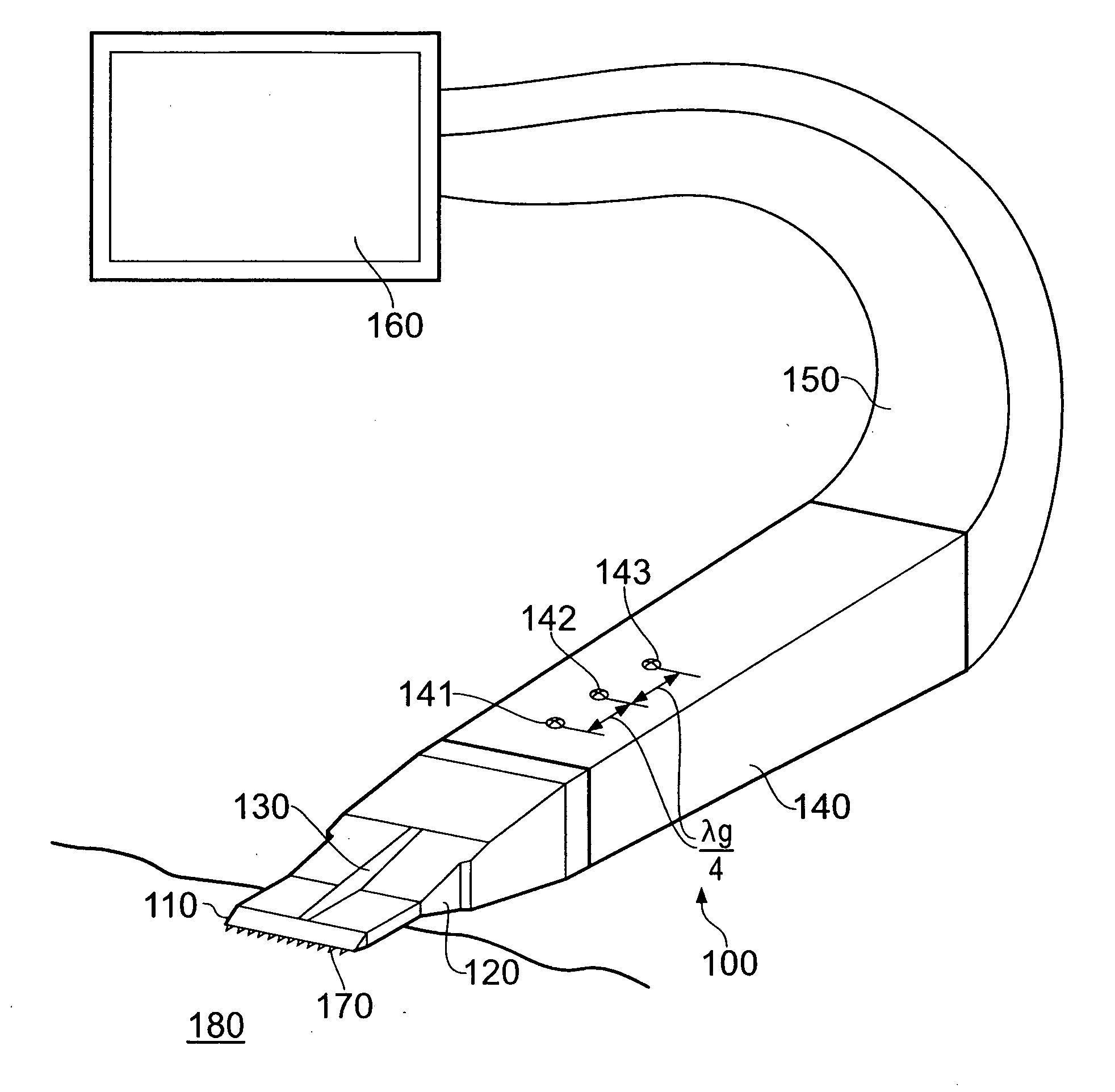Surgical antenna
a surgical and antenna technology, applied in the field of surgical antennas, can solve the problems of morbidity and mortality, excessive blood loss during conventional liver surgery, and large amount of blood lost during surgery, so as to reduce the damage caused to healthy tissue, prevent tissue charring, and effectively seal off blood flow
- Summary
- Abstract
- Description
- Claims
- Application Information
AI Technical Summary
Benefits of technology
Problems solved by technology
Method used
Image
Examples
Embodiment Construction
; FURTHER OPTIONS AND PREFERENCES
[0123]The operation of the resection antennas described here may be described as being similar to that of a butter knife or meat knife. Various blade structures have been considered for the implementation of the current invention, namely: a ‘tooth’ shape blade, a scalpel shape blade, a ‘paint stripper’ shape blade, a chisel shape blade, a hemispherical shape blade, a kitchen knife shape blade and a carving knife shape blade. In the instance where a ‘tooth’ shape blade is used, it may be preferable for the tooth to take the form of a triangular structure with a 60° angle at each of the base corners to provide the ability to “dig” into the tissue.
[0124]FIG. 1 shows a surgical antenna structure 100 for resection applications. The arrangement shown here is a loaded waveguide antenna, which uses a sapphire material to form the radiating section or blade 110 and, in this particular instance, also act as a sharp cutting tool. The shape of the sapphire secti...
PUM
 Login to View More
Login to View More Abstract
Description
Claims
Application Information
 Login to View More
Login to View More - R&D
- Intellectual Property
- Life Sciences
- Materials
- Tech Scout
- Unparalleled Data Quality
- Higher Quality Content
- 60% Fewer Hallucinations
Browse by: Latest US Patents, China's latest patents, Technical Efficacy Thesaurus, Application Domain, Technology Topic, Popular Technical Reports.
© 2025 PatSnap. All rights reserved.Legal|Privacy policy|Modern Slavery Act Transparency Statement|Sitemap|About US| Contact US: help@patsnap.com



